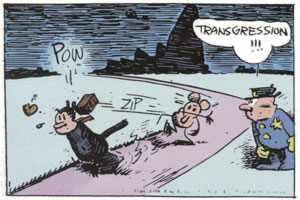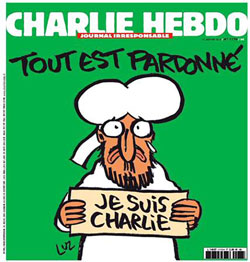 The panel discussion “You can get killed doing this: sketches from the satire biz” was held at the recent MoCCA Fest in New York. The panel discussed the chilling effects on what satirical works get published, and why it’s important to keep publishing satire anyway. The blurb in the festival’s booklet reads in part: “Can satire survive in a world of trigger warnings and Kalishnikov triggers? Could the National Lampoon be published in a post-Charlie Hebdo world? Is self-censorship the greatest sin of all?” This week we present an excerpt of that discussion.
The panel discussion “You can get killed doing this: sketches from the satire biz” was held at the recent MoCCA Fest in New York. The panel discussed the chilling effects on what satirical works get published, and why it’s important to keep publishing satire anyway. The blurb in the festival’s booklet reads in part: “Can satire survive in a world of trigger warnings and Kalishnikov triggers? Could the National Lampoon be published in a post-Charlie Hebdo world? Is self-censorship the greatest sin of all?” This week we present an excerpt of that discussion.
It was led by Rick Meyerowitz, formerly of National Lampoon, and featured political cartoonist Steve Brodner, former National Lampoon co-editor Sean Kelly, and cartoonist Peter Kuper.
Also: Tim meets up with Mike Seid, Rahsaan Romain, and John Lee at the New York Aspiring Comic Creators Club meetup!
Podcast: Play in new window | Download

 If you’re listening to this podcast, you’ve probably at some point encountered (if not read) a history of DC or Marvel. But how about Harvey Comics? or Cracked Magazine? And if you’re into animation, perhaps you’d like a history of DePatie-Freling or Total Television Productions?
If you’re listening to this podcast, you’ve probably at some point encountered (if not read) a history of DC or Marvel. But how about Harvey Comics? or Cracked Magazine? And if you’re into animation, perhaps you’d like a history of DePatie-Freling or Total Television Productions?
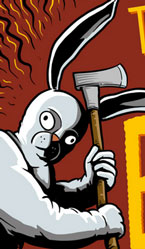 Last year at the
Last year at the  Our frequent guest
Our frequent guest 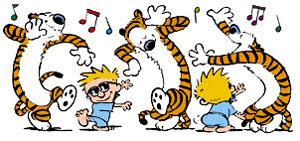 FLASHBACK! From 1985 to 1995, Bill Watterson’s Calvin and Hobbes challenged newspaper readers with imaginative stories, beautiful art, philosophical discussions, and ROTFL gags. Watterson famously eschewed commercialism, not only in the strip, but in real life, approving no C&H tie-in products other than books of strips and a calendar or two. Tim and Kumar discuss this game-changing strip and how relevant it remains today.
FLASHBACK! From 1985 to 1995, Bill Watterson’s Calvin and Hobbes challenged newspaper readers with imaginative stories, beautiful art, philosophical discussions, and ROTFL gags. Watterson famously eschewed commercialism, not only in the strip, but in real life, approving no C&H tie-in products other than books of strips and a calendar or two. Tim and Kumar discuss this game-changing strip and how relevant it remains today.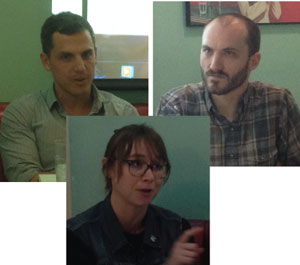 Tim Across America, part eight! Comics journalism (a.k.a. “graphic journalism”, and other names) has been gradually making a place for itself within the larger journalism world (and the comics world) for the past 20 years or so. Just as Tim was heading to San Francisco, a group of Bay Area journalists on Meetup.com was preparing to hold panel discussion featuring three comics journalists:
Tim Across America, part eight! Comics journalism (a.k.a. “graphic journalism”, and other names) has been gradually making a place for itself within the larger journalism world (and the comics world) for the past 20 years or so. Just as Tim was heading to San Francisco, a group of Bay Area journalists on Meetup.com was preparing to hold panel discussion featuring three comics journalists: 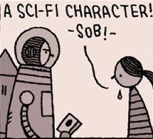 Tim and Mulele discuss more comics Dale sent us from L.A., including “
Tim and Mulele discuss more comics Dale sent us from L.A., including “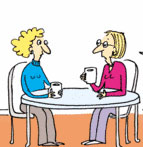 FLASHBACK! Is writing funny female characters a bigger challenge than making male characters funny? Or is it all a matter of approach? Paige Braddock (
FLASHBACK! Is writing funny female characters a bigger challenge than making male characters funny? Or is it all a matter of approach? Paige Braddock (